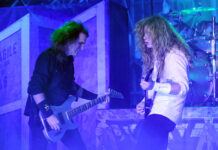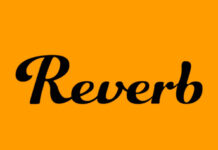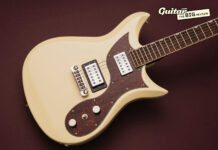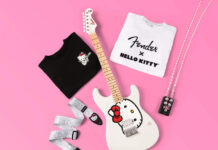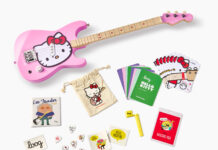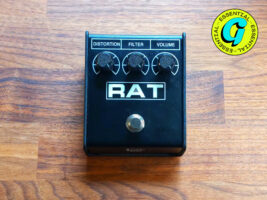
Pro Co RAT 2 review: what makes it a distortion legend?
$89.99/ £79, ratdistortion.com
The Pro Co RAT is arguably the distortion pedal. It’s so supremely versatile, affordable, and cool that if you want to get started in the world of any kind of stompbox-based dirt it should probably be the first one you buy – and it might end up being the last. In this classic review, I’m diving into what makes the Pro Co RAT such a legendary piece of kit.
READ MORE: Universal Audio’s UAFX Brigade: an elegant take on the OG chorus pedal
Modern vs Vintage RATs
The Pro Co RAT was designed in the mid-1970s, and first introduced as a production model in 1979. Since then, the pedal’s artwork and enclosure have changed drastically, but the basic circuitry of the stock RAT has remained almost entirely unchanged. While today I’m examining the current iteration of the pedal, the RAT 2, this circuit is essentially the same as that first big-box RAT too. While the famed LM308 chip is lauded as a signature of vintage units, its replacement – the OP07 – is electronically almost identical, at least in the ways that matter.
Is the RAT a distortion, overdrive or a fuzz?
This is a question that does come up – and opens up a bit of a Pandora’s box on how we use those terms generally. There’s not really any hard and fast rule that objectively defines the difference between them, instead it’s just consensus. And for the RAT, the consensus is that it is a distortion, but it can do overdrive and fuzz.
How does the RAT work?
To understand the RAT’s status let’s first learn a little about its basic circuit architecture. All distortion and overdrive pedals use the basic principle of first making your signal louder, and then limiting it in some way to create distortion. You’ll see the RAT described as an op-amp hard-clipper, which means that an op-amp is doing the ‘making louder’ bit, and diodes connected to ground do the limiting bit.
So, upon entering the RAT your signal hits an op-amp and is amplified, to a degree decided by the distortion control. Interestingly, the op-amp isn’t cleanly boosting your signal to be distorted later – at higher distortion settings, the gain exceeds what the chip can handle, so distortion is occurring before your signal even reaches the diodes.
After leaving the op-amp, your signal then hits the ‘real’ clipping stage: a pair of 1N4148 silicon diodes. These conduct anything above a certain threshold away to ground, meaning the tips of your waveform are clipped off – a smooth sine wave will start to more resemble a square wave, hence, distortion. In comparison to soft-clipping, which limits the signal within a feedback loop, hard-clipping is a more aggressive sound – the transition between the unclipped and clipped portions of the signal is sharper.
The diodes are responsible for a good amount of the actual distortion, and are therefore part of what makes the RAT the RAT. It’s no surprise, then, that many RAT variations – official or otherwise – are based around switching these out. The Turbo RAT uses red LEDs, You Dirty RAT uses germanium and modern boutique RAT clones can offer a variety of switchable clipping diodes.
Inside the Pro Co RAT 2
The RAT’s tone control
Unlike other early op-amp hard clippers such as the MXR Distortion+, the RAT has a tone control, placed after the clipping stage. It uses one of the most basic filter designs possible: a potentiometer before a capacitor connected to ground. This creates a low-pass filter that, with the potentiometer at max, has a cutoff frequency of just under 500Hz. With the filter on full it’s a very dark sound, but with the filter on minimum, the full audio signal from the previous circuit stages is allowed through.
Despite the simplicity, this filter design is what gives the RAT a lot of its character. A Big Muff is a useful point of comparison: there, the tone stack uses a low-pass and a high-pass filter together, with the tone control blending between the two. This is the source of that classic Big Muff midrange scoop – the two filters don’t fully overlap, and so there’s a dip where their cutoff frequencies meet. The RAT, with just a single filter, therefore has comparatively more midrange, and rather than tilting the EQ response, its job is just to smooth off high-end, which, when it comes to actually playing the thing, is very useful indeed.
Using the RAT
The RAT’s overall sound is going to, like any distortion pedal, massively depend on what you’re putting it before. But let’s allow it to speak for itself as much as possible at first by running it into the high-headroom clean channel of a tube amp. With the volume at unity, distortion set to nine-o-clock and filter at noon, the RAT evokes a cooking tube amp that’s just starting to overdrive. It’s a surprisingly dynamic and expressive sound – the low-gain side of the RAT doesn’t have its praises sung that often, but it’s the basis of a lot of great tones, not least John Scofield’s.
But hey, isn’t this a distortion pedal? It sure is – so let’s crank that gain knob. A full-gain RAT is a huge sound – thick and smooth, and positively loaded with harmonic saturation. Not that surprising, really – there’s both op-amp and diode clipping working here to mash your input signal into a fine paste.
There’s only a tiny amount of the high-end-fizz that you’d normally get from running a high-gain distortion into a clean channel. This is in part thanks to the strength of the filter control, but also the op-amp’s slew rate – it’s not quite able to swing the signal back and forth fast enough to fully amplify high-frequency material, so as you turn up the gain the chip is doing its own filtering too, mainly of the high-frequency material that we perceive to be noisy fizz in a guitar sound. As is often the case with guitar equipment, what makes the chip technically worse at being an amplifier makes the more pleasing sound.
The RAT is not the loudest pedal out there. Neither is a Toyota Prius the fastest car out there, but you’ll still get a speeding ticket if you blast past a primary school at 70 mph in one. That is to say: you can absolutely use the RAT as a boost. Full volume on the RAT is more than enough to light a fire under most clean channels, and when the distortion from the pedal mixes with that of an overdriving amp, magic happens. That last little bit of fizz leaves the building, and you start to understand the rodent-worshipping cults this pedal has inspired. Turn the gain UP in with the volume and filters on full, and, yeah, it essentially becomes a fuzz pedal. Thick, doomy slabs of infinite sustain, with any squealing feedback rolled off by the aggressive filter.
Bringing the gain back down, and it’s surprising the amount to which the RAT chugs – it probably shouldn’t be your first port of call for ultra-modern metal by any stretch, but at low gain, high volume and filter to taste there’s not an insignificant amount of tight, bright articulate distortion going on. This will depend partially on your amp, and that kind of inevitably brings us back to the appeal of the RAT. The sweeps on all of its controls are just so drastic that no matter what full signal chain you’re using, the RAT will nestle into a spot on your board and find a fitting place.
The RAT 2
RATs and RAT-alikes
Right now, if you want to buy a RAT pedal, you can head to basically any guitar dealer and do just that. But there is some variety available: those aforementioned Turbo and You Dirty variants offer, respectively, a more open and overdrive-like sound and a more compressed and scuzzy sound. There’s also the Lil’ Rat, a much smaller version of the RAT 2 pedal that’s a little bit easier to fit onto a board. But really, you can’t go wrong with the regular production RAT 2 – it’s also a great entry point into pedal tinkering, as you can easily convert it to a Turbo or You Dirty model with a quick diode swap, or add in a diode toggle switch.
The RAT is also the basis of many a boutique darling. To name just a few: the 1981 Inventions DRV, the EQD Life Pedal, the Black Mass 1312, the JHS PackRat, the Jam Rattler and the Walrus Iron Horse are all based on the RAT’s basic architecture, adding various circuit tweaks such as extra clipping options, more headroom, an overhaul of the gain structure and so on. They’re all excellent options too if you want the added flexibility, but keep in mind that they’re often a good deal pricier than the real deal.
But, really, the prevalence of the RAT-inspired distortion pedals is just another testament to the lasting power of the circuit. For something that’s been essentially unchanged since 1978, it’s still a large part of the bedrock of the world of modern dirtboxes. So when a pedal is cheap as chips and basically anyone in any band can use it, it’s of course no surprise it’s stuck around for the long haul. And I don’t just mean the product line – any given RAT will also probably outlast human civilization, of course. But sonically, its versatility means it’s absolutely able to change with the times. If you’re yet to experience the magic of the RAT, it comes highly recommended.
The post Pro Co RAT 2 review: what makes it a distortion legend? appeared first on Guitar.com | All Things Guitar.
Source: www.guitar-bass.net

